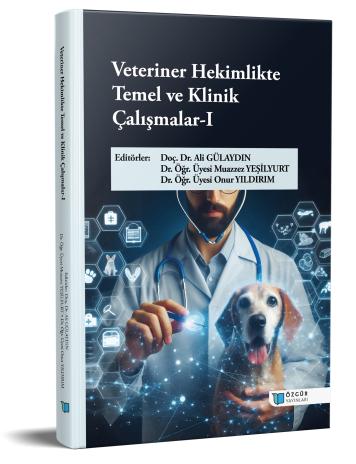
Diaphragmatic Hernia in Dogs and Cats
Chapter from the book:
Günaydın,
A.
&
Yeşilyurt,
M.
&
Yıldırım,
O.
(eds.)
2025.
Basic and Clinical Studies in Veterinary Medicine-I.
Synopsis
The diaphragm is a muscle-membrane structure that separates the thoracic and abdominal cavities, supports respiration, and plays a role in lymphatic fluid flow. Diaphragmatic hernia occurs when a defect in this structure allows abdominal organs to protrude into the thoracic cavity, posing risks of respiratory failure and organ entrapment. It may be congenital (especially PPDH) or acquired due to trauma, commonly resulting from traffic accidents, falls, or blunt force. Clinical signs include dyspnea, tachycardia, cyanosis, collapse, vomiting, and absence of palpable abdominal contents. Chronic cases may present with anorexia, lethargy, and weight loss. Diagnosis is based on trauma history, physical examination, and imaging techniques. Radiography is the primary diagnostic tool, showing loss of diaphragmatic outline, thoracic gas accumulation, and organ displacement. Contrast radiography and ultrasonography can aid diagnosis. Surgical treatment yields high survival rates.
Diaphragmatic hernia is a serious clinical condition often requiring surgical intervention. Computed tomography (CT), radiography, and ultrasonography are used for diagnosis, though liver herniation may complicate detection. Preoperative stabilization, fluid therapy, oxygen support, and prophylactic antibiotics or steroids are crucial. Surgical approach varies by case, with ventral midline laparotomy commonly preferred. During anesthesia, positive pressure ventilation should be applied cautiously to avoid high inspiratory pressures. The diaphragmatic defect is closed using simple continuous sutures, and a thoracic drain may be placed if needed. Postoperative monitoring should focus on hypoventilation, pulmonary edema, and pain management. Complications occur in approximately 50% of cases, with pneumothorax, pleural effusion, cardiac arrhythmias, and gastrointestinal issues being the most frequently reported.

